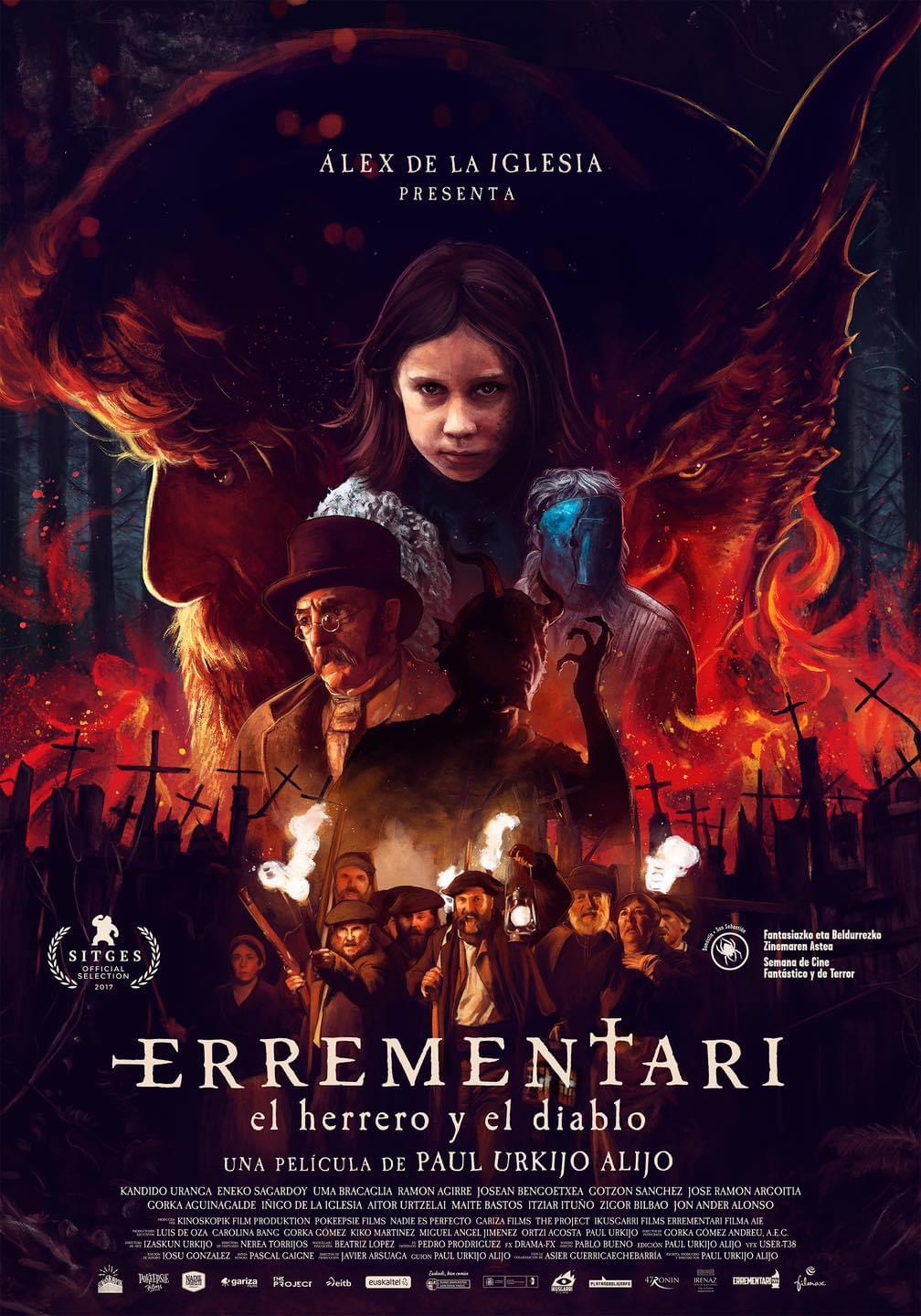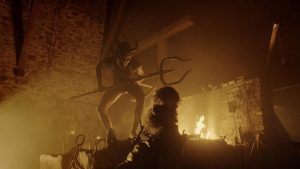The Blacksmith and the Devil (2017)

“Errementari: The Blacksmith and the Devil,” a 2017 Basque-language film directed by Paul Urkijo Alijo and produced by Álex de la Iglesia, offers a refreshing blend of fantasy, horror, and dark folklore. Rooted in a traditional Basque folk tale and based on “Patxi Errementaria” by José Miguel de Barandiarán, the film is an ambitious attempt to intertwine cultural heritage with contemporary filmmaking.
Suggested videos for you:
Plot Overview
Set in the 19th century, the story revolves around a reclusive and tormented blacksmith named Patxi (played by Kandido Uranga) who harbors a mysterious and fearsome secret. He is rumored to have made a pact with the Devil and guards his fortress-like smithy with unparalleled ferocity. The narrative truly begins when a young orphaned girl named Usue (played by Uma Bracaglia) accidentally stumbles into Patxi’s lair while searching for her lost doll. This innocent intrusion sets off a chain of events that unveils Patxi’s dark dealings with the demon Sartael (played by Eneko Sagardoy), leading to a mix of horror, dark humor, and unexpected alliances.
Themes and Symbolism
The film delves deep into themes of guilt, redemption, and the blurred lines between good and evil. Patxi is not a typical hero; he is tortured by the consequences of war and personal betrayal. His complex character is a study in resilience against both physical and metaphysical forces. The demon Sartael, on the other hand, embodies a blend of menace and dark humor, subverting the typical portrayal of demonic beings as purely evil.
The religious undertones are significant, with Christian symbols juxtaposed against folkloric elements. The battle between Patxi and Sartael becomes a broader commentary on human fallibility, forgiveness, and the consequences of one’s actions. The role of Usue adds another dimension as she represents innocence and the hope for redemption, effectively softening Patxi’s otherwise hardened persona.
Visual and Artistic Execution
Urkijo Alijo’s background in animation and illustration is evident in the meticulous attention to visual detail. The film’s color palette is dominated by moody, dark tones that capture the eerie atmosphere of its rural Basque setting. The scenes inside the blacksmith’s lair, with their heavy use of shadow and flickering firelight, evoke a timeless, gothic quality that draws the viewer into a world both otherworldly and familiar.
The practical effects and makeup used for Sartael are especially noteworthy. Rather than relying heavily on CGI, the film employs traditional makeup artistry to create the demon’s grotesque yet charismatic appearance. This choice enhances the film’s authenticity and reinforces its folk tale roots. The period-appropriate costumes and set designs further transport the audience to a world that feels immersive and historically grounded.
Performances
Kandido Uranga’s portrayal of Patxi is one of the film’s greatest strengths. His rugged demeanor, coupled with subtle glimpses of vulnerability, makes the character compelling. Uranga effectively communicates Patxi’s internal struggle, shifting between scenes of quiet menace and moments of poignant regret. Uma Bracaglia as Usue provides a counterbalance to Patxi’s brooding presence with her innocence and determination, which serves as the emotional heart of the story.
Eneko Sagardoy’s performance as Sartael is a standout. He brings a mischievous energy to the role that oscillates between threatening and darkly comedic, creating a memorable antagonist that defies conventional demonic archetypes. His interactions with Patxi are laced with a strange camaraderie, revealing layers to the relationship between humans and the supernatural.
Cultural Significance
“Errementari” is notable for its dedication to preserving and promoting Basque culture. The film is presented in the Basque language, lending authenticity to its storytelling and exposing a wider audience to a rich cultural tradition that is often overlooked in mainstream cinema. Paul Urkijo Alijo’s commitment to faithfully adapting a local legend is a testament to the importance of regional stories in global filmmaking.
The movie’s exploration of folklore is not limited to superficial references; it delves into how myths and beliefs shape collective identity and moral understanding. This approach distinguishes “Errementari” from other fantasy films that may borrow folklore for aesthetic purposes but fail to integrate it meaningfully into the narrative.
Pacing and Storytelling
While the film is visually captivating and thematically rich, it does have moments where the pacing falters. The first half, heavy with exposition and atmosphere-building, can feel slow to viewers accustomed to faster-moving narratives. However, once the plot gains momentum, particularly when Usue and Sartael’s paths cross, the story becomes more engaging.
Some critics have pointed out that the film’s tonal shifts between horror and humor can be jarring, though others argue that this mix is a hallmark of folktale storytelling, which often straddles the line between moral caution and playful mischief. For those willing to embrace this duality, “Errementari” offers a unique experience that feels both nostalgic and novel.
Conclusion
“Errementari: The Blacksmith and the Devil” is a bold and imaginative film that brings Basque folklore to life with style and substance. Paul Urkijo Alijo’s direction, coupled with strong performances and a meticulous eye for detail, results in a story that is dark, moving, and refreshingly original. Though it may not be for everyone due to its pacing and niche cultural focus, those who appreciate folklore-inspired storytelling and fantasy with depth will find much to admire. The film’s dedication to authenticity and its willingness to explore the complexities of redemption and damnation make it a standout entry in the genre.
Overall, “Errementari” is more than just a tale of devils and blacksmiths; it is a story about the human condition, told through the lens of myth and legend.











